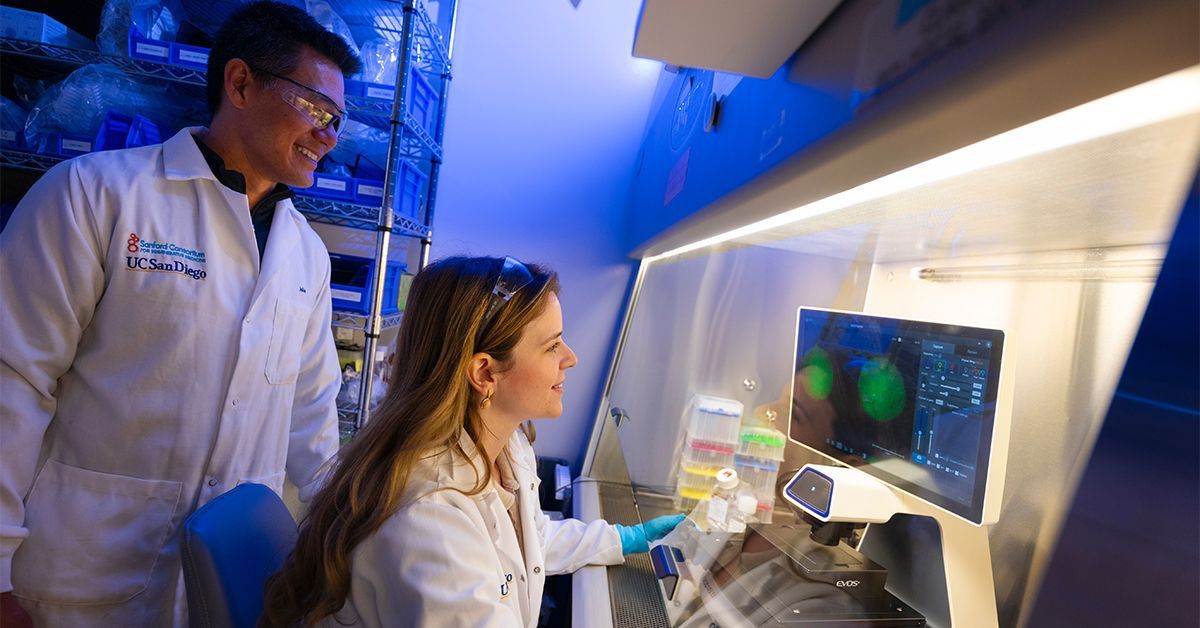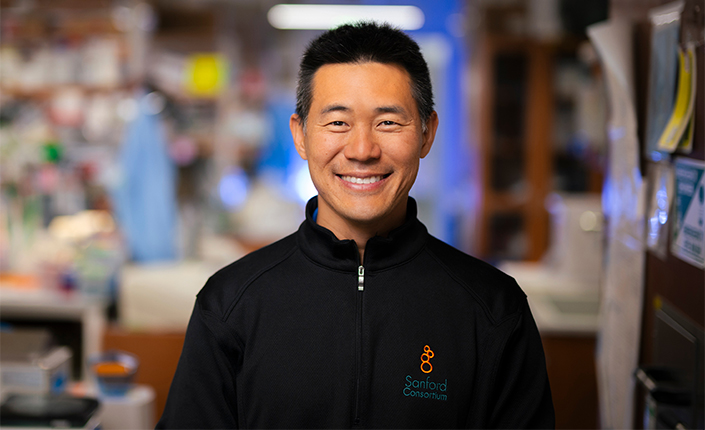Tiny Molecules, Big Science: How RNA Research Could Transform Medicine, If We Let It
We are in the midst of an RNA revolution, set to change the future of medicine. However, that revolution is now in jeopardy.

The Yeo lab focuses on the function and therapeutic applications of RNA, a category of molecule that helps convert the genetic instructions of DNA into proteins that carry out these instructions. Photo credit: Erik Jepsen
Gene Yeo, Ph.D., professor of cellular and molecular medicine at University of California San Diego School of Medicine, studies some of the smallest molecules in biology, but their impact on human health is massive.
His research centers on RNAs, or ribonucleic acids, chemical messengers that are at the crux of everything that happens within living cells. While many people are familiar with DNA (deoxyribonucleic acid), which provides the instructions for the development, growth, and function of organisms, RNAs are what turn these instructions into biological reality.
“Think of RNA as a kind of cellular pharmacist,” said Yeo, who is also director of the Center for RNA Technologies and Therapeutics, director of the Sanford Stem Cell Institute Innovation Center, and Moores Cancer Center member at UC San Diego. “RNA molecules get a ‘prescription’ from DNA, and then they fill the prescription by creating the proteins our cells need to function.”
Because RNAs are so central to our biology, they are also drivers of a wide array of diseases. Defects in how RNA is produced and processed can lead to cancer, degenerative diseases, metabolic disorders and autoimmune diseases. RNA viruses, such as HIV, influenza or SARSCoV2, also hijack our cellular machinery to cause disease.
“When the underlying machinery is not functioning in our cells, the problems that result are huge,” said Yeo. “But this also means we have a lot of opportunities to leverage RNAs to treat diseases and support human health.”
Putting RNAs to Work
According to many researchers, we are currently in the midst of a RNA revolution, with scientists around the world turning their gaze to these tiny molecules for disease diagnosis and treatment.
One disease Yeo has made strides in understanding and treating is myotonic muscular dystrophy type 1, a rare genetic disorder that slowly degrades muscles and other organs. One of the drivers of this disease is the expression of “toxic” RNA molecules within cells, but Yeo and his group discovered that these toxic RNAs can be eliminated using RNA-targeting gene therapies.
This approach could, according to Yeo, not only lead to cures for this particular disease, but could also be applicable to a wide array of diseases affecting millions of people around the world. That said, it will take more research to fully unlock this potential.

Gene Yeo, Ph.D. is a professor cellular and molecular medicine at UC San Diego and scientific director and chair of the Scientific Steering Commitee at the Sanford Consortium for Regenerative Medicine. Photo credit: Erik Jepsen/UC San Diego Health Sciences
“There’s a huge appetite for RNA research right now, and there are so many possibilities that remain untapped,” said Yeo, who in addition to his scientific credentials has co-founded several biotech startups and holds an M.B.A. from the UC San Diego Rady School of Management. “We can’t stop now – we’re only just beginning.”
Progress in Peril
While the ongoing RNA revolution is a great example of how fundamental research in the lab can unlock world-changing breakthroughs, like curing devastating diseases, this research is currently under threat due to proposed cuts to funding from the National Institutes of Health (NIH).
For Yeo specifically, these cuts would mean a substantial reduction in the amount of science that can be done in his lab.
“There’s a lot of administrative support needed for research that’s funded through indirect research costs, and if we lose funding to support that, we’ll have to make up for it with direct costs, which ultimately means less science and slower progress.”
These impacts will not only be felt at UC San Diego. Yeo’s lab is housed in the Sanford Consortium for Regenerative Medicine, a multi-institution collaboration that aims to enable and expand collaborative stem cell research and to translate discoveries, such as those Yeo’s group makes, into clinical therapies and cures.
“There’s a huge appetite for RNA research right now, and there are so many possibilities that remain untapped. We can’t stop now – we’re only just beginning.” ~ Gene Yeo, Ph.D.

The Yeo lab, housed at the Sanford Consortium for Regenerative Medicine, combines wet-lab and computational techniques to better understand the role of RNA in disease and develop new ways to leverage RNA for diagnosis and treatment.
While the Consortium was established and built with philanthropic funding from T. Denny Sanford and grants from the California Institute for Regenerative Medicine (CIRM), the day-to-day upkeep of the building and the instrumentation it houses largely comes out of NIH funding. This upkeep not only supports the labs of individual faculty from the Consortium’s four constituent organizations — UC San Diego, the Salk Institute, Sanford Burnham Preys, and the La Jolla Institute for Immunology—it also helps maintain several core research facilities that provide access to specialized equipment and services to researchers across the region.
“This is a unique and powerful research resource, but we can’t do what we do here without the NIH,” added Yeo, who is also scientific director and chair for the Consortium’s Scientific Steering Committee.
In the longer term, Yeo warns that if the NIH sees continued pressure to reduce its spending, the consequences on America’s scientific enterprise as a whole, and by extension tomorrow’s breakthroughs, could be catastrophic.
“In the past, the world’s best scientists have come to the United States because we have the resources to support world-class research. “If that changes, scientists might leave the country for better opportunities, and we stand to lose a decade or more of progress as a result.”
